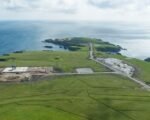In an unprecedented move, Neoen, the French renewable energy giant, has secured a colossal A$1.1 billion financing for its diverse portfolio of energy projects in Australia. This financial feat, facilitated by the legal expertise of Ashurst, involves a syndicate of 11 banks and underscores the growing momentum in the renewable energy sector.
The financing arrangement is a testament to Neoen’s commitment to expanding its renewable energy footprint across Australia. With a portfolio that includes wind, solar, and battery storage assets, this deal marks one of the most significant infusions of capital into the country’s green energy initiatives.

The transaction not only refinances existing asset-level debt but also earmarks funds for the development of new projects. Among these is the Collie Battery Stage 1 in Western Australia, poised to be a pioneering 4-hour long duration battery project on a global scale.
A Strategic Collaboration of Global Banks
The syndicate, comprising both Australian and international lenders, reflects the confidence in Neoen’s vision and the robustness of its operations. The involvement of major financial institutions like ANZ, Bank of China, and HSBC, among others, highlights the strategic importance of renewable energy investments in the current economic climate.
This collaboration is a clear signal that the financial sector is ready to back sustainable projects that promise long-term environmental and economic benefits. It also sets a precedent for future financing in the renewable energy domain, paving the way for similar large-scale endeavors.
Impact on Australia’s Energy Landscape
Neoen’s financing deal is more than just a financial transaction; it’s a pivotal moment for Australia’s energy landscape. By bolstering the country’s renewable energy capacity, this move aligns with the national goals of transitioning to a more sustainable and resilient energy system.
The deal also reinforces Australia’s position as a leader in the adoption of green energy technologies. With Neoen’s ambition to reach 10 GW of operational or under-construction assets by 2030, the future of Australia’s energy sector looks increasingly renewable.








